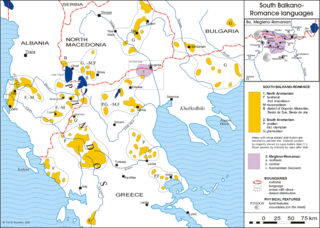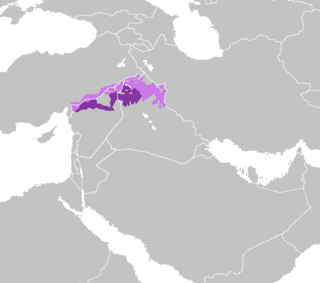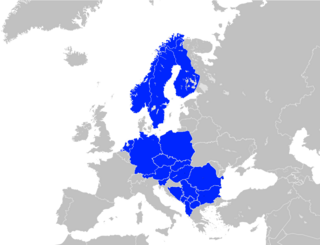 W
WThe languages of Turkey, apart from the official language Turkish, include the widespread Kurdish (Kurmanji), the moderately prevalent minority languages Arabic and Zazaki, and a number of less common minority languages, some of which are guaranteed by the 1923 Treaty of Lausanne.
 W
WAdyghe, also known as West Circassian, is a Northwest Caucasian language spoken by the western subgroups of Circassians. It is spoken mainly in Russia, as well as in Turkey, Jordan, Syria and Israel, where they settled after the Circassian genocide. It is closely related to the Kabardian language, though some reject the distinction between the two languages in favor of both being dialects of a unitary Circassian language.
 W
WAlbanian is an Indo-European language spoken by the Albanians in the Balkans and the Albanian diaspora in the Americas, Europe and Oceania. With about 7.5 million speakers, it comprises an independent branch within the Indo-European languages and is not closely related to any other Indo-European language.
 W
WAnatolian Arabic is any of several varieties of Arabic spoken in Turkey. They are dialects of North Mesopotamian Arabic spoken in the Eastern Anatolia, an area comprising the Turkish provinces of Mardin, Siirt, Batman, Diyarbakır, and Muş.
 W
WArmenian is an Indo-European language belonging to an independent branch of which it is the only member. It is the official language of Armenia. Historically spoken in the Armenian Highlands, today Armenian is widely spoken throughout the Armenian diaspora. Armenian is written in its own writing system, the Armenian alphabet, introduced in 405 AD by the priest Mesrop Mashtots. The total number of Armenian speakers worldwide is estimated between 5 and 7 million.
 W
WAzerbaijani or Azeri, also referred to as Azeri Turkic or Azeri Turkish, is a Turkic language spoken primarily by the Azerbaijani people, who live mainly in the Republic of Azerbaijan where the North Azerbaijani variety is spoken, and in the Azerbaijan region of Iran, where the South Azerbaijani variety is spoken. Although there is a very high degree of mutual intelligibility between both forms of Azerbaijani, there are significant differences in phonology, lexicon, morphology, syntax and sources of loanwords.
 W
WThe Bosnian language is the standardized variety of Serbo-Croatian mainly used by ethnic Bosniaks. Bosnian is one of three such varieties considered official languages of Bosnia and Herzegovina, along with Croatian and Serbian. It is also an officially recognized minority language in Croatia, Serbia, Montenegro, North Macedonia and Kosovo.
 W
WBulgarian is a South Slavic language spoken in Southeastern Europe, primarily in Bulgaria. It is the language of Bulgarians.
 W
WCrimean Tatar language, also called Crimean language, is a Kipchak Turkic language spoken in Crimea and the Crimean Tatar diasporas of Uzbekistan, Turkey, Romania and Bulgaria, as well as small communities in the United States and Canada. It should not be confused with Tatar proper, spoken in Tatarstan and adjacent regions in Russia; the languages are related, but belong to two different subgroups of the Kipchak languages and thus are not mutually intelligible. It has been extensively influenced by nearby Oghuz dialects.
 W
WGeorgian is the most widely-spoken of the Kartvelian languages and serves as the literary language or lingua franca for speakers of related languages. It is the official language of Georgia and the native or primary language of 87.6% of its population. Its speakers today number approximately four million.
 W
WGreek is an independent branch of the Indo-European family of languages, native to Greece, Cyprus, Albania, and the other parts of the Balkans, the Black Sea coast, and the Eastern Mediterranean. It has the longest documented history of any Indo-European language, spanning at least 3,400 years of written records. Its writing system is the Greek alphabet, which has been used for approximately 2,800 years; previously, Greek was recorded in writing systems such as Linear B and the Cypriot syllabary. The alphabet arose from the Phoenician script and was in turn the basis of the Latin, Cyrillic, Armenian, Coptic, Gothic, and many other writing systems.
 W
WThe Istanbul Greek dialect is the endangered Greek dialect spoken by the millennia-old Greek community in Istanbul, which has now shrunk to a couple thousand individuals. It is differentiated from Standard Greek due to a number of internal divergent developments, preservation of characteristics of Ancient Greek that are absent from Standard Greek, and Language contact, most notably with Turkish, French, Italian and Armenian. Various characteristics of Istanbul Greek are said to have parallels in Old Athenian Greek, as well as Tsakonian.
 W
WJudaeo-Spanish or Judeo-Spanish, also known as Ladino, is a Romance language derived from Old Spanish. Originally spoken in Spain, and then after the Edict of Expulsion spreading through the then-Ottoman Empire as well as France, Italy, the Netherlands, Morocco and England, it is today spoken mainly by Sephardic minorities in more than 30 countries, with most of the surviving speakers residing in Israel. Although it has no official status in any country, it has been acknowledged as a minority language in Bosnia and Herzegovina, Israel, France, and Turkey. In 2017, it was formally recognised by the Royal Spanish Academy.
 W
WKabardian also known as East Circassian, is a Northwest Caucasian language closely related to the Adyghe language. Circassian nationalists reject the distinction between the two languages and refer to them both as "Circassian".
 W
WThe Kurdish languages constitute a dialect continuum, belonging to the Iranian language family, spoken by Kurds in the geo-cultural region of Kurdistan and the Kurdish diaspora. The three Kurdish languages are Northern Kurdish, Central Kurdish, and Southern Kurdish.
 W
WKurmanji, also termed Northern Kurdish, is the northern dialect of the Kurdish languages, spoken predominantly in southeast Turkey, northwest and northeast Iran, northern Iraq, northern Syria and the Caucasus and Khorasan regions. It is the most widely spoken form of Kurdish, and is the native language to some non-Kurdish minorities in Kurdistan as well, including Assyrians/Syriacs, Armenians, Chechens, Circassians, and Bulgarians.
 W
WKyrgyz is a Turkic language of the Kipchak branch spoken in Central Asia. Kyrgyz is the official language of Kyrgyzstan and a significant minority language in the Kizilsu Kyrgyz Autonomous Prefecture in Xinjiang, China and in the Gorno-Badakhshan Autonomous Province of Tajikistan. There is a very high level of mutual intelligibility between Kyrgyz, Kazakh and Altay.
 W
WThe Laz language is a Kartvelian language spoken by the Laz people on the southeastern shore of the Black Sea. It is estimated that there are around 20,000 native speakers of Laz in Turkey, in a strip of land extending from Melyat to the Georgian border, and about 2,000 in Georgia.
 W
WLevantine Arabic, also called Shami, or simply Levantine, is a subgroup of mutually intelligible vernacular Arabic varieties spoken in the Levant, in Syria, Lebanon, Jordan, Palestine, Israel, and Turkey. It is also spoken among diaspora communities from this region, most significantly among the Palestinian, Lebanese, and Syrian diasporas.
 W
WLezgin, also called Lezgi or Lezgian, is a Northeast Caucasian language. It is spoken by the Lezgins, who live in southern Dagestan (Russia); northern Azerbaijan; and to a much lesser degree Turkmenistan; Uzbekistan; Kazakhstan; Turkey, and other countries. It is a much-written literary language and an official language of Dagestan. It is classified as "vulnerable" by UNESCO's Atlas of the World's Languages in Danger.
 W
WMegleno-Romanian is a Balkan Romance language, similar to Aromanian or a dialect of the Romanian language. It is spoken by the Megleno-Romanians in a few villages in the Moglena region that spans the border between the Greek region of Macedonia and North Macedonia. It is also spoken by emigrants from these villages and their descendants in Romania and by a small Muslim group in Turkey. It is considered an endangered language.
 W
WMesopotamian Arabic, also known as Iraqi Arabic, is a continuum of mutually intelligible varieties of Arabic native to the Mesopotamian basin of Iraq as well as spanning into Kuwait, Syria, Iran, southeastern Turkey, and spoken in Iraqi diaspora communities.
 W
WNorth Mesopotamian Arabic is a variety of Mesopotamian Arabic spoken north of the Hamrin Mountains in Iraq, in western Iran, northern Syria, and in southeastern Turkey. as well as in Southern Iraq by Christians and Jews. The peripheral Turkish varieties in Siirt, Muş and Batman are quite divergent. Like other Mesopotamian Arabic varieties and Levantine Arabic, it shows signs of an Aramaic substrate.
 W
WRomani is an Indo-Aryan macrolanguage of the Romani communities. According to Ethnologue, seven varieties of Romani are divergent enough to be considered languages of their own. The largest of these are Vlax Romani, Balkan Romani (600,000), and Sinte Romani (300,000). Some Romani communities speak mixed languages based on the surrounding language with retained Romani-derived vocabulary – these are known by linguists as Para-Romani varieties, rather than dialects of the Romani language itself.
 W
WThe Tatar language is a Turkic language spoken by Tatars mainly located in modern Tatarstan, as well as Siberia. It should not be confused with the Crimean Tatar or Siberian Tatar, which are closely related but belong to different subgroups of the Kipchak languages.
 W
WThere is considerable dialectal variation in Turkish.
 W
WTurkish, also referred to as Istanbul Turkish or Turkey Turkish, is the most widely spoken of the Turkic languages, with around 70 to 80 million speakers. It is the national language of Turkey. Significant smaller groups of Turkish speakers exist in Iraq, Syria, Germany, Austria, Bulgaria, North Macedonia, Northern Cyprus, Greece, the Caucasus, and other parts of Europe and Central Asia. Cyprus has requested that the European Union add Turkish as an official language, even though Turkey is not a member state.
 W
WUbykh, or Ubyx, is an extinct Northwest Caucasian language once spoken by the Ubykh people.
 W
WWestern Armenian is one of the two standardized forms of Modern Armenian, the other being Eastern Armenian. It is based mainly on the Istanbul Armenian dialect contrary to Eastern Armenian which is mainly based on the Yerevan Armenian dialect.
 W
WThe Zan languages, or Zanuri, are a branch of the Kartvelian languages constituted by the Mingrelian and Laz languages. The grouping is disputed as some Georgian linguists consider the two to form a dialect continuum of one Zan language. This is often challenged on the most commonly applied criteria of mutual intelligibility when determining borders between languages, as Mingrelian and Laz are only partially mutually intelligible, though speakers of one language can recognize a sizable amount of vocabulary of the other, primarily due to semantic loans, lexical loans and other areal features resulting from geographical proximity and historical close contact common for dialect continuums.
 W
WZaza is an Indo-European language spoken primarily in eastern Turkey by the Zazas. The language is a part of the Zaza–Gorani language group of the northwestern group of the Iranian branch. The glossonym Zaza originated as a pejorative and many Zazas call their language Dimlî.